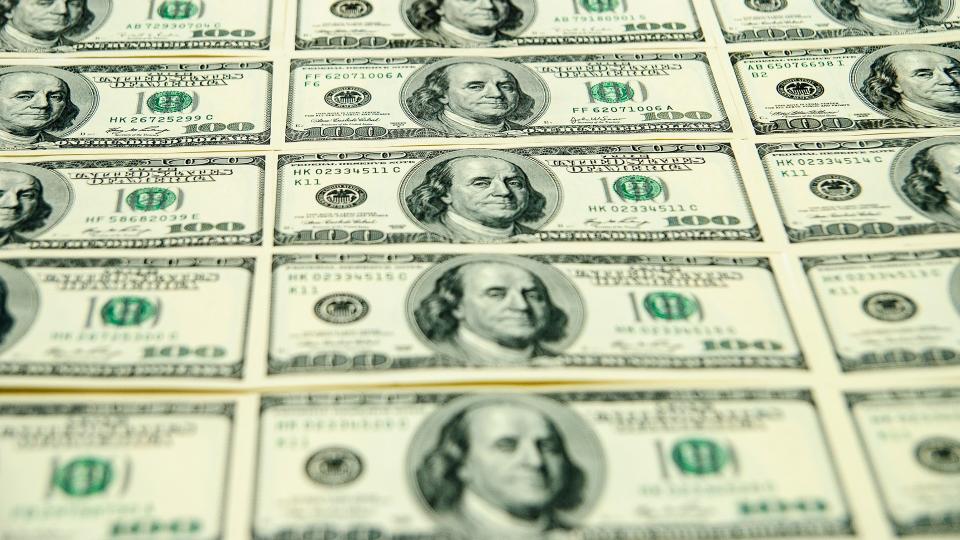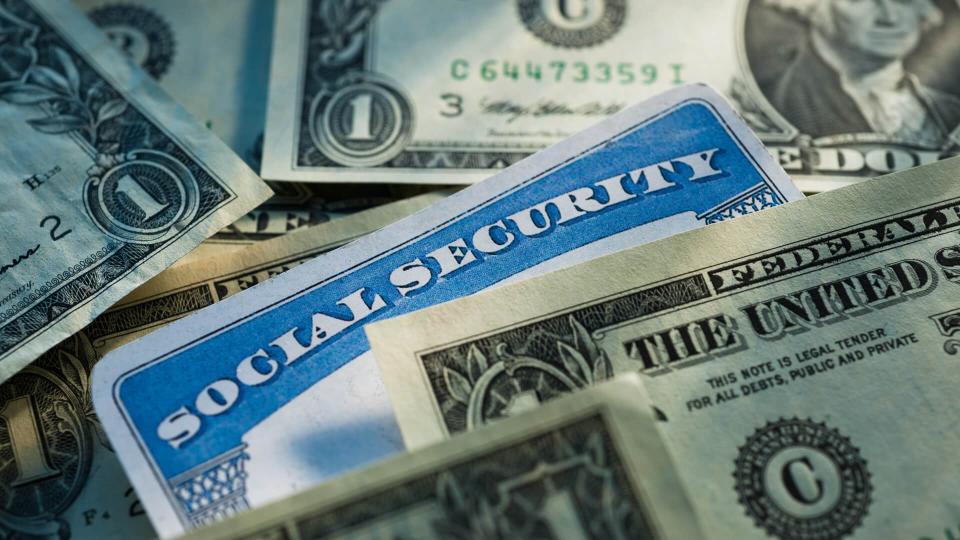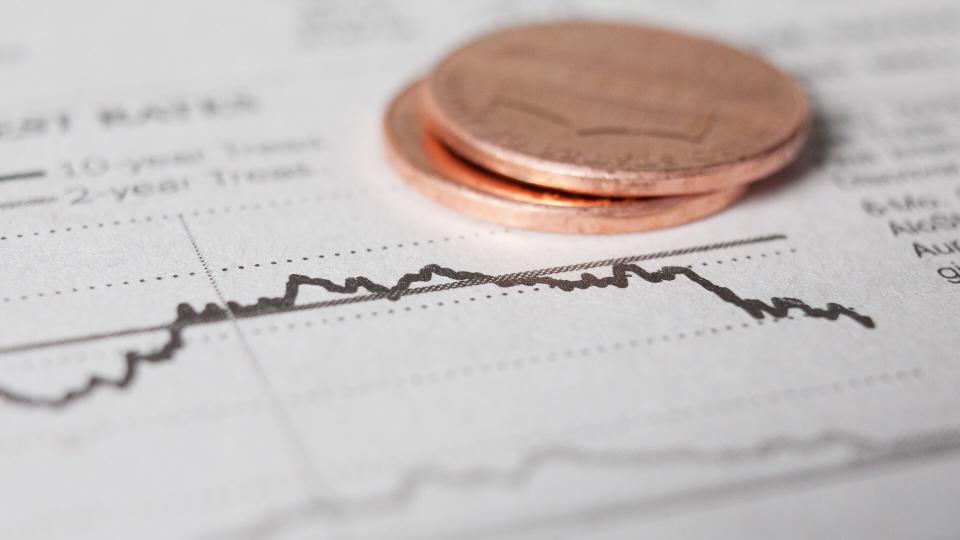This Is Where Your Tax Dollars Actually Go

The U.S. is expected to bring in close to $3.26 trillion in tax revenue in 2021, according to Congressional Budget Office (CBO) projections. About half of that comes from individual income taxes and one-third comes from payroll taxes, which include Social Security and Medicare taxes.
Find Out: How To Itemize Deductions Like a Tax Pro
That’s right — the federal government relies heavily on your tax dollars. So you might be wondering, “Where does tax money go?” To find out, GOBankingRates looked over CBO projections for 2021.
The results show an astonishing break from past trends in 2020, as the government borrowed record amounts of cash to dole out in the form of the CARES Act and other coronavirus relief programs. Just as spending soared, revenue plummeted as jobs dried up and tax bases collapsed. 2020, however, is now in the past and the designers of the coming year’s budget had a lot of abnormalities to consider.
Find out which items your tax dollars are funding.
Last updated: May 6, 2021

The Federal Budget
Federal spending is projected to be close to $5.07 trillion for fiscal year 2021, according to the CBO. With tax revenue expected to be less than $3.3 trillion, that means there will be a deficit of $1.81 trillion. In a rarity that reveals just how consequential 2020 was, something that almost never happens will happen this year: the government will actually spend less than it did the year before.
Whoa: The Wildest Things Your Taxes Are Paying For

Social Security
Gobbling up nearly one dollar in four, Social Security benefits are the biggest single expenditure in the federal budget. The U.S. is expected to pay out more than $1.14 trillion to the program in 2021 in the form of old-age, survivors, and disability benefits.
Social Security is funded through a 6.2% payroll tax that workers pay and another 6.2% that employers pay. Self-employed people have to pay the full 12.4%. However, because the number of adults 65 and older is expected to increase dramatically by 2035, Social Security tax revenues will cover only about 75% of benefits, according to the Social Security Administration.
Find Out: What Social Security Will Look Like in 2035

Medicare
The second-biggest mandatory spending outlay and the No. 2 budget expenditure in general is Medicare, which is expected to cost $810 billion in 2021. This federal program provides health insurance coverage for adults 65 and older.
Medicare is funded by a payroll tax of 2.9% paid by employees and employers. Each pays 1.45% of an employee’s income. It’s also funded by general revenues and premiums paid by Medicare recipients.
Ouch: Why the Bonus Tax Rate Is Bad News for Your Tax Refund

Defense
CBO data show that the federal government is projected to spend $752 billion on defense in 2021. That’s a little more than half of the combined $1.42 trillion set aside for federal discretionary spending, which is normal for a normal year. Discretionary spending data from 2020, however, show just how abnormal last year was. In 2020, defense spending was $757 billion–about the same as this year–but thanks to virus relief costs, non-defense discretionary spending last year totaled a whopping $1.14 trillion.
Wow: What $1 Trillion Really Looks Like, Plus More Fascinating Money Facts

Medicaid
About 10 percent of the federal budget goes toward Medicaid. In 2021, spending on this joint federal and state health insurance program for low-income people is expected to be $537 billion. Social Security, Medicare, and Medicaid form the bedrock of America’s social safety net, but the federal government also funds the Children’s Health Insurance Program (CHIP) for children of low-income families and health insurance premium subsidies for the Affordable Care Act. Combined, funding for these two health programs will be $72 billion in 2021.
Don’t Throw Them Away: These Are the Receipts To Keep for Doing Your Taxes

Income Security Programs
In 2021, about $499 billion will be spent on income security programs like unemployment compensation, earned income tax credits, child nutrition programs, and the Supplemental Nutrition Assistance Program (SNAP).
That’s an enormous increase over the $303 billion that was spent in 2019 and even the $386 billion budgeted for next year–and it’s all because of the coronavirus. Even $500 billion, however, is nothing compared to what the federal government was forced to spend on income security programs in 2020–more than $1.13 trillion.
Learn More: Here’s How Much You Need To Earn To Be ‘Rich’ in Every State

Federal Civilian and Military Retirement
Funding for retirement benefits for federal civilian workers and military members makes up less than 5% of the budget. The CBO projects that the federal government will spend $179 billion on these retirement benefits in 2021.
Tax Help: Take Advantage of These 16 Commonly Missed Tax Deductions

Veterans Programs
Veterans programs account for 2% of the federal budget. The government is expected to spend $132 billion in 2021 on compensation, pension, life insurance and other programs for veterans.
Surprise: Money Can Buy Happiness… So It Seems

Agriculture and Other Programs
Less than 2% of the budget — $100 billion in 2021 — goes to agriculture programs, mortgage service providers Fannie Mae and Freddie Mac, deposit insurance, higher education, and other government services. In 2020, this family of “other programs” got a new addition: the Coronavirus Relief Fund. That, along with a huge increase in Small Business Administration (SBA) funding, caused this kind of spending to balloon nearly tenfold last year to $969 billion.
Find Out: How Much Debt Americans Have at Every Age

Interest on Debt
Last but not least, the U.S. has a lot of debt, and, yes, your tax dollars are going toward the repayment of this debt. At the end of 2019, the U.S. held about $16.8 trillion in debt, a number that had been slowly and steadily creeping up for years. By the end of 2020, however, slow and steady were things of the past. America’s COVID-related borrowing and spending frenzy bumped that number up to $20.27 trillion, which is the amount of debt taxpayers are grappling with today.
More From GOBankingRates
Money’s Most Influential: Where Do Americans Get Their Financial Advice?
‘Rich Dad Poor Dad’ Author Robert Kiyosaki: You Should Never Say ‘I Can’t Afford That’
Cameron Huddleston contributed to the reporting for this article.
This article originally appeared on GOBankingRates.com: This Is Where Your Tax Dollars Actually Go

